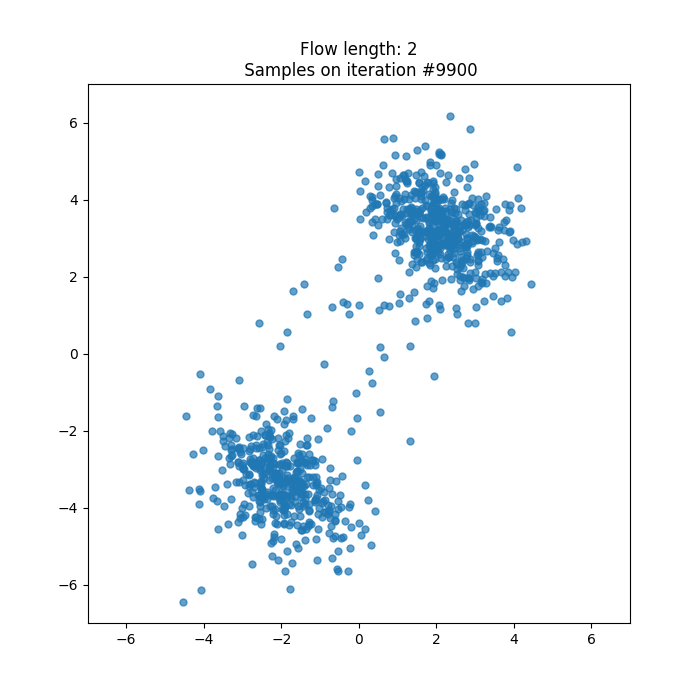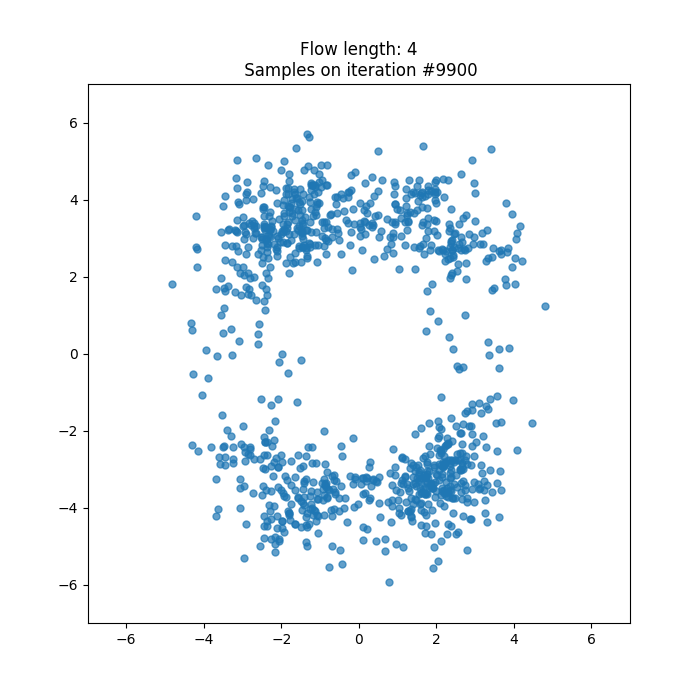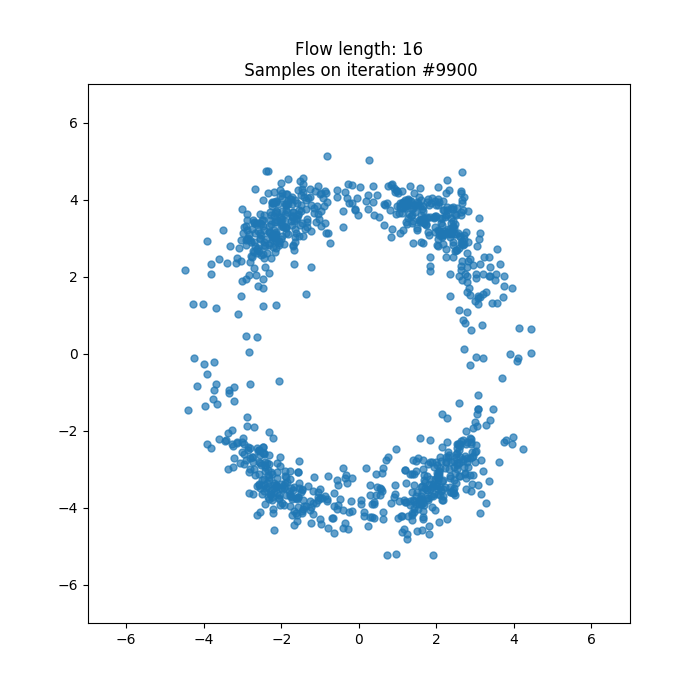ex4sperans / Variational Inference With Normalizing Flows
Programming Languages
Projects that are alternatives of or similar to Variational Inference With Normalizing Flows
Variational Inference with Normalizing Flows
Reimplementation of Variational Inference with Normalizing Flows (https://arxiv.org/abs/1505.05770)
The idea is to approximate a complex multimodal probability density with a simple probability density followed by a sequence of invertible nonlinear transforms. Inference in such model requires a computation of multiple Jacobian determinants, that can be computationaly expensive. Authors propose a specific form of the transformation that reduces the cost of computing the Jacobians from approximately to
where
is the dimensionality of the data.
NOTE: Currently I provide implementation for the simple case, where the true density can be expressed in a closed form, so it's possible to explicitly minimize KL-divergence between the true density and the density represented by a normalizing flow. Implementing the most general case of normalizing which is capable of learning from the raw data is a bit problematic for the transformation described in the paper since inverse function for such transformation can not be expressed in a closed form. Currently I'm working on another kind of normalizing flow called Glow where all the transformations have closed-form inverse functions, and I'm planning to release it soon. Stay tuned!
I got the following results:
As can be seen, the approximation quality indeed increases as the flow length gets higher.
Reproducing my results
To reproduce my results, you will need to install pytorch.
Then you will need to install other dependencies from requirements.txt. If you are using pip, simply run pip install -r requirements.txt.
After you have installed the dependencies, run python run_experiment.py and collect the results in the experiments folder.




